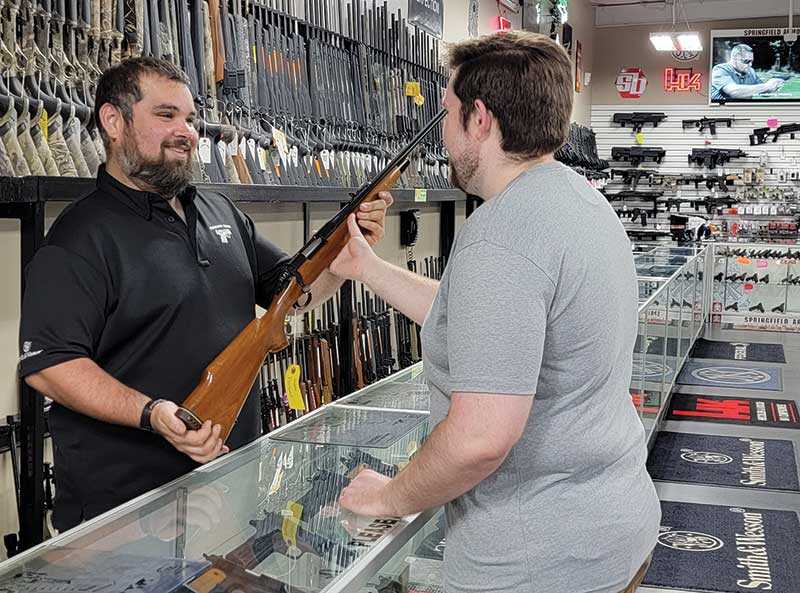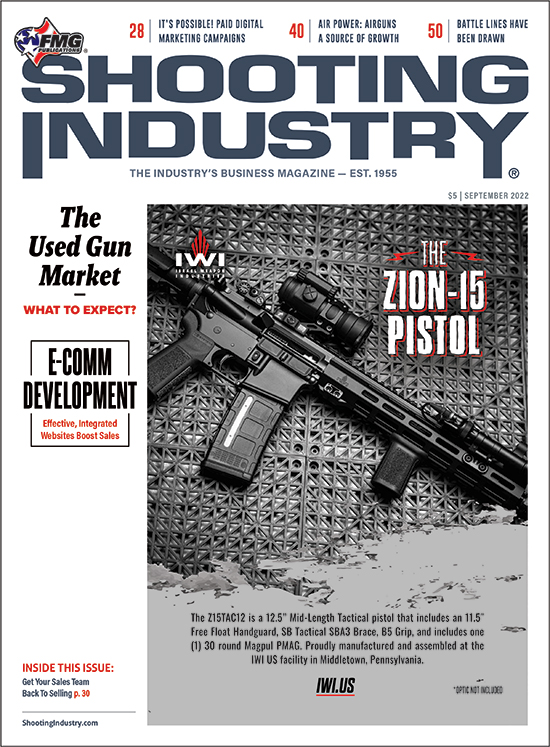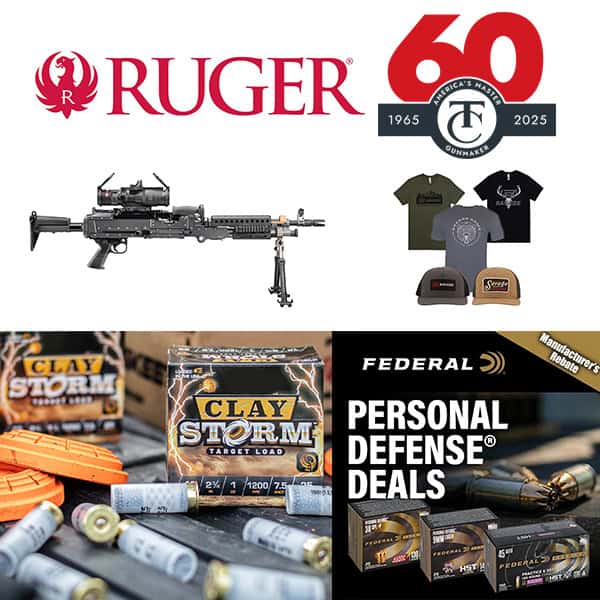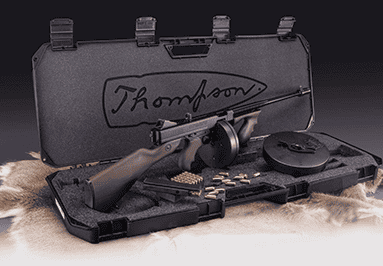Making The Most Of
Used Gun Sales
Not every retailer can make a profit selling used products. Firearms retailers, however, can make significant incremental sales when they add used guns to their inventory.
Just ask Clay Ausley. He and his wife, Melissa, own Fuquay Gun in Fuquay-Varina, N.C. Used gun sales represent about 30% of his business, depending on the economy — when the economy goes down, trade in used guns goes up.
“When the economy takes a downturn, folks are more apt to trade in a firearm when they want to purchase a new one versus when people have some extra cash and just buy another one to add to their collection,” he shared. “Anytime we start seeing the economy take a downturn, we see more trade-ins, which helps us have more used guns to sell.”
Although he’s getting a good number of trade-ins now, Ausley is not seeing a lot of new gun owners trading in firearms — meaning people who purchased their first firearm during the past couple of years of COVID, civil unrest and general uncertainty are keeping what they have. Rather, the people trading in guns are long-time gun owners who have multiple firearms.
“For the most part, trade-in customers are longtime customers,” Ausley confirmed. “Most of the customers we saw during the COVID bump bought a firearm or two and aren’t as heavy into guns as the longtime customers are. Give them a couple more years and a few more guns and then they may trade one in, but a person who only has a gun or two is not typically a trade-in customer.”
A takeaway: We’re not losing all those new shooters we gained during the past couple of years.
What’s Trending?
Chandler Holmes, one of the sales reps at Intrepid Shooting Sports in Fort Worth, Texas, said used guns represent a large part of their business.
“We have just about everything,” he acknowledged. “We have Springfield 1911s, we have rolling blocks, we have all sorts of stuff.”
What Holmes sees changes with time as well, in unpredictable ways.
“Lately we’ve seen a lot of older rifles, from the 1950s and even a little older,” he stated.
These old guns have held their value and often sell for more than they did originally. The store often has older revolvers too, in a wide mix of calibers and manufacturers.
Intrepid Shooting Sports takes used guns as trade-ins and also on consignment. They sell them both over the counter and online, particularly on GunBroker.com.
At Fuquay Gun, Ausley shared there are no particular types, models or brands of firearms customers trade in any more frequently than others; the ones they trade are across the board. However, there’s a clear winner on the type of gun sold.
“When it comes to gun sales, handguns rule the roost at Fuquay Gun, for sure,” he said. “We sell and trade more used handguns than we do long guns; it’s a wide variety, with a little bit of everything.”
It will come as no small surprise: used pistols dominate the handgun category at Fuquay Gun.
“ Anytime we start seeing the economy take a downturn, we see more trade-ins, which helps us have more used guns to sell.”
Clay Ausley, Owner Fuquay Gun Fuquay-Varina, N.C.
“We have 14 handgun cases — and only one of those is a revolver case,” he informed. “Revolvers, in my store, are definitely not the sought-after guns for the most part.” (Editor’s Note: Ausley confirmed this total includes his used and new handgun cases combined.)
Industry-wide, he said, looking back all the way to the 1960s and 1970s, revolvers were much more common than they are now.
“It’s just been trending that way,” he suggested. “The reason for it is, if you go back pre-1980, semi-autos were considered to be fairly unreliable. There were a couple of manufacturers that, in the 1980s, went a long way toward making semi-auto handguns as reliable or even more so than revolvers. It’s one of the reasons we’ve seen this transition over the years. Today, there are some semi-auto companies we see fewer problems from than some revolver companies.”
For example, Ausley said, tolerances today on firearms are very tight compared to what they were in the past. So, for a revolver made in the 1970s, the gap between the cylinder face and the barrel is much greater than in revolvers made today.
“Today, you can barely slide a piece of paper into that gap,” Ausley observed. “If you shoot one of today’s revolvers enough, one built very tight, and you get the face of the cylinder dirty enough, at some point the cylinder won’t spin.”
One, Two Or 200 Guns
Although many used guns come in as trade-ins by ones and twos, sometimes estates with large collections become available.
Purchasing used guns this way requires a strong cash flow so a retailer can write a big check.
Greg Tropino, owner of GAT Guns in Dundee, Ill., often purchases estates.
“I’ll buy one gun at a time, two at a time or 200 at a time,” he said. “You have to have cash flow. Sometimes we write six-figure checks.”
Firearms he purchases this way include lots of classic guns, including old black powder guns. Used guns represent about 10% of Tropino’s business.
“I have about 6,000 guns in stock,” he confirmed. “I sell them both on GunBroker and in the store.”
Show Your Customers Their Value
Ausley doesn’t sell many guns on consignment. Most of the time he either buys used guns or lets customers trade them in for other guns, whichever the customer prefers.
“We’re extremely fair on the price we give customers,” he said. “If they were to consign a gun, they really wouldn’t be getting any more money, so most customers opt to sell a gun to us. It’s rare we have anyone just absolutely demand we consign something.”
On the other side of that transaction, when Ausley sells a used gun, it is just as likely to be online as it is over the counter.
“It’s about 50-50 between in-store and online,” he noted.
When someone trades in a used gun at Fuquay Gun, a store gunsmith completely cleans and services it before it’s put out for sale.
“Then when we sell a gun to a customer — whether it’s a new gun or a used gun — if they have an issue with that firearm, we stand with our customer,” Ausley affirmed. “If they have a problem with a firearm, we fix it or we address it with the manufacturer, at no charge to the customer. When a customer buys a used gun from us, they don’t have to worry about buying a lemon. We value our customers, and we don’t want to lose one over one gun not working properly.”
Ausley concluded he makes enough selling used guns to be able to continue paying a fair price for them when someone wants to sell.
All told, whether it makes up 5, 10, 30 or 50% of your business, the used gun market provides an important revenue stream for storefront dealers — and is likely set to increase with the economy in flux.
Dealers, what are your predictions for the used gun market? Will we see continued activity with rising inflation impacting the economy? We want to hear from you! comments@shootingindustry.com.








